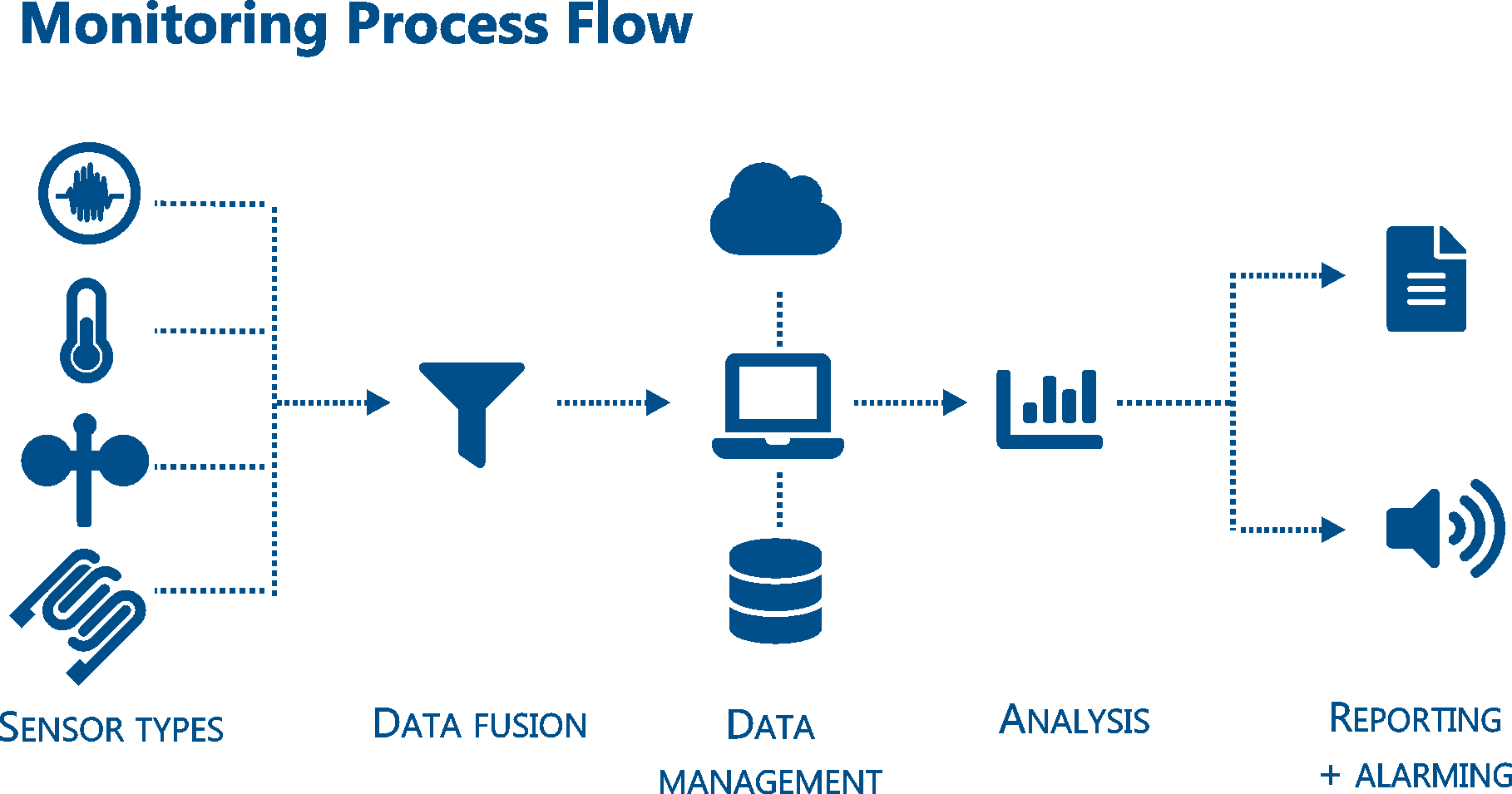What is Structural Health Monitoring?
Technology is a set of methods and systems that evolve as solutions to problems are developed. Solutions developed in the field of construction also take into consideration issues such as convenience, safety and efficiency. Similarly, there are methods and systems that enable various measures to be taken against natural disasters. Structural Health Monitoring, one of these methods, is the measurement of the current state of structures through sensors in order to prevent possible natural or unnatural hazards as early as possible (1).
In structures, the strength of system elements may decrease due to damages, aging and environmental factors. Unforeseen factors and results may occur in the design of structural elements due to earthquakes or various ground settlements. Thus, weakening of the structural system occurs over time. In such cases, determining the current condition and changing parameters of the structure is of great importance in order to develop solutions.
With the Structural Health Monitoring method, especially if cracks, bending, settlement, etc. occur as a result of forces that damage the structure such as earthquakes, storms, humidity, excessive snow, explosions, etc., these damages can be detected in real time, and their rate of occurrence and continuity can be monitored. Thus, optimum solutions can be developed against the damages detected in the structure based on measurement and the life of the structure can be calculated thanks to long-term monitoring.
Structural Health Monitoring involves assessing the operational performance of a structure using data obtained from the system with the help of sensors, detecting damage or deterioration and directing its maintenance to ensure its functionality and safety throughout its service life. In other words, it aims to improve the quality of life of structures.
A structural health monitoring system has three main components (2): data collection, transmission, data storage. Finally, the process is completed by processing and evaluating the data. The process proceeds as follows, as can be seen in Figure 1: Collecting and integrating data with different types of sensors, managing and analyzing the collected data, reporting and creating an alert system.
Structural Health Monitoring process (3)
Through Structural Health Monitoring systems:
With the data obtained from the daily vibrations of the structure, fatigue and aging can be monitored. Thus, for example, if there is deformation in a building, damage can be detected and this danger situation can be recognized before it occurs. SMS and email alerts can be made with the data. Earthquake reports are generated when the structure is exposed to other effects suspected of causing damage (4).
Fast automatic reporting in case of earthquake, structural integrity data, comparison of before and after data, early warning algorithms, providing basic numerical data for possible repair and retrofitting work.
After the earthquake, by providing information about the condition of the building, it can support the choice between various alternatives aimed at minimizing the consequences (5).
In addition to structural use, city vibration maps and seismic risk analysis, early warning systems can be included for resilient cities in urban emergency and disaster management (6).
Structural health monitoring using wireless sensor networks (7)
The key point of sensor placement is related to which parameters are desired to be measured and monitored (8).
If you ask where these systems can be used, they can be applied in all living and aging structures, especially those that push the limits in terms of architecture and engineering. Bridges, historical artifacts, tunnels, residential and industrial buildings, dams, stadiums can be given as examples. Thus, by taking lessons from the disasters we have experienced, solutions can be produced to take permanent and future-oriented measures.
Written by: İlayda Köroğlu
(Architect & Editor)
Sources
Balageas, D., Fritzen, C.P., & Güemes, A. (2006). Structural Health Monitoring. ISTE, London, UK .
Li, H.N., Li, D.S., & Song, G.B. (2004). Recent Applications of Fiber Optic Sensors to Health Monitoring in Civil Engineering. Engineering Structures 26, (pp.1647-1657).
https://www.vallen.de/applications/structural-health-monitoring-shm/
Giordano, P. F., Iacovino, C., Quqa, S., & Limongelli, M. P. (2022). The value of seismic structural health monitoring for post-earthquake building evacuation. Bulletin of Earthquake Engineering, 20(9), 4367-4393.
M. L. Rajaram, E. Kougianos, S. P. Mohanty and P. Sundaravadivel, "A wireless sensor network simulation framework for structural health monitoring in smart cities," 2016 IEEE 6th International Conference on Consumer Electronics - Berlin (ICCE-Berlin).
Haque, M. E., Asikuzzaman, M., Khan, I. U., Ra, I. H., Hossain, M. S., & Shah, S. B. H. (2020). Comparative study of IoT-based topology maintenance protocol in a wireless sensor network for structural health monitoring. Remote sensing, 12(15), 2358.
Limongelli, M. P., & Çelebi, M. (Eds.). (2019). Seismic structural health monitoring: from theory to successful applications. Springer.


